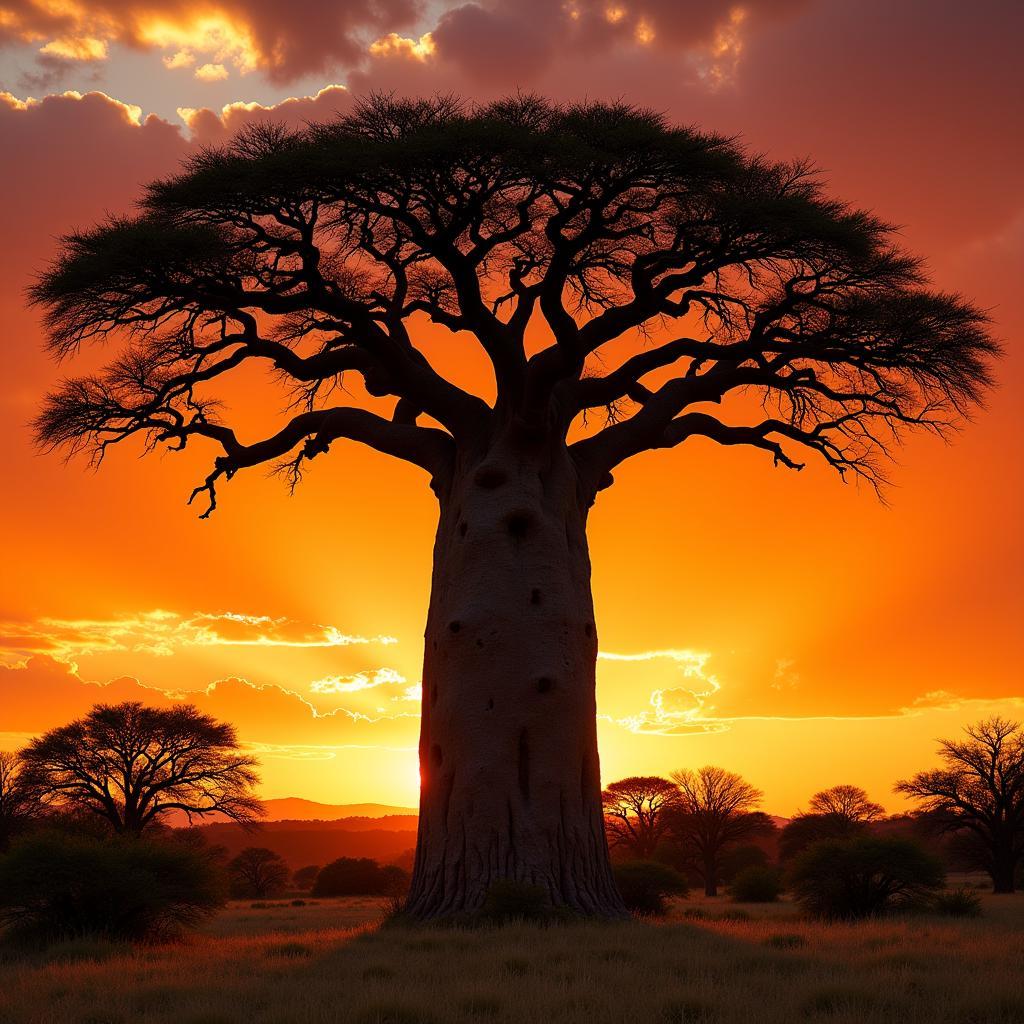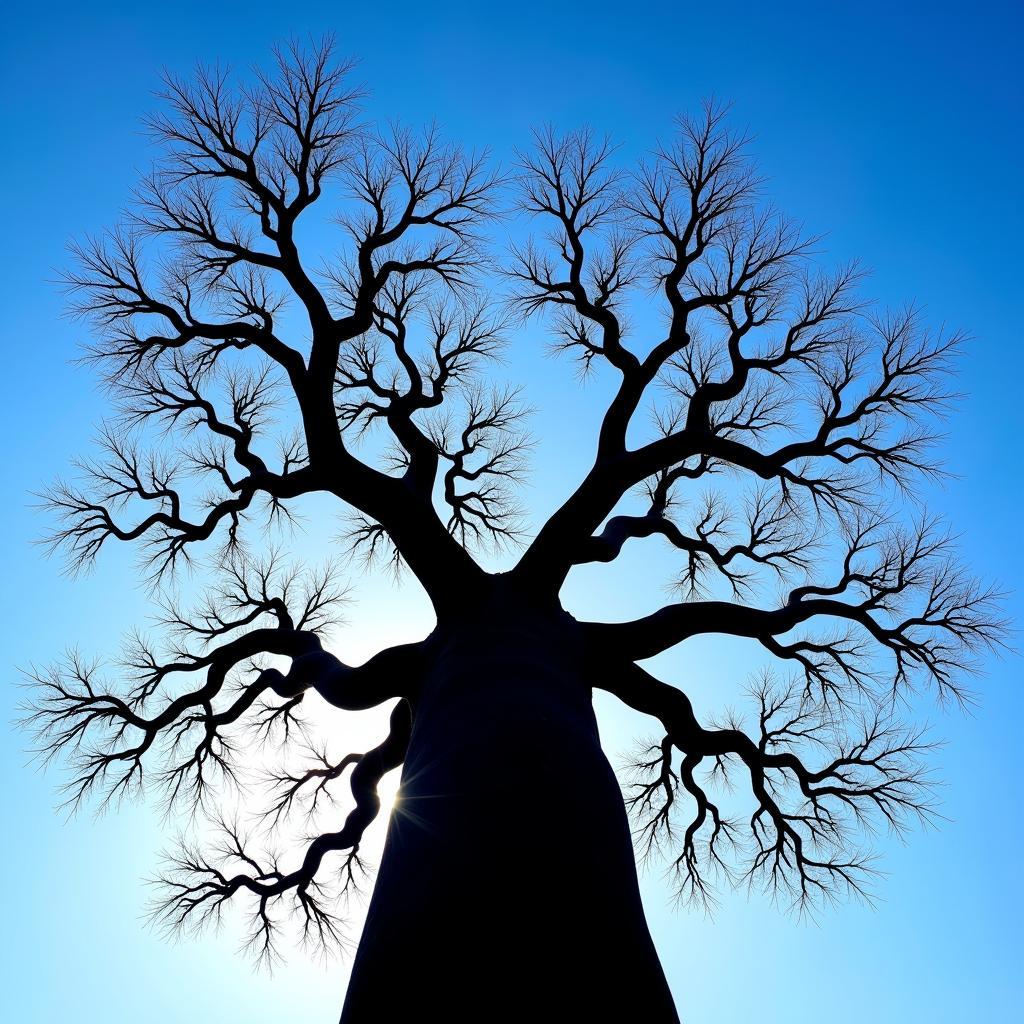African Baobab Tree Legends: Giants of Ancient Wisdom
The African baobab tree, often called the “Tree of Life”, is an iconic symbol of the African landscape.  Baobab tree in the African savannah Towering over the savanna with their massive, bottle-shaped trunks and gnarled branches, these giants hold not just water, but also centuries of stories, myths, and legends. Passed down through generations, these tales offer a glimpse into the rich tapestry of African culture and the profound relationship between people and nature.
Baobab tree in the African savannah Towering over the savanna with their massive, bottle-shaped trunks and gnarled branches, these giants hold not just water, but also centuries of stories, myths, and legends. Passed down through generations, these tales offer a glimpse into the rich tapestry of African culture and the profound relationship between people and nature.
The Baobab Tree: More Than Just a Tree
In many African cultures, the baobab is much more than a source of food, water, or shelter; it’s a sacred entity woven into the fabric of their existence. Its imposing size and longevity, often exceeding a thousand years, have made it a symbol of wisdom, resilience, and the interconnectedness of life. From creation stories to cautionary tales, the baobab is a central character in African folklore, reminding us of the power and mystery embedded in the natural world.
Legends of the Upside-Down Tree
One of the most popular legends surrounding the baobab tree is the tale of its “upside-down” appearance. Some say that the gods, angered by the baobab’s arrogance, uprooted it and planted it upside down.  Baobab tree branches resembling roots against the sky This unique shape, with branches resembling roots reaching for the sky, has inspired countless stories and interpretations across various African cultures.
Baobab tree branches resembling roots against the sky This unique shape, with branches resembling roots reaching for the sky, has inspired countless stories and interpretations across various African cultures.
Tales of Wisdom and Shelter
In some cultures, the baobab is believed to be the dwelling place of spirits and ancestors. Its hollow trunks often serve as natural shelters, providing refuge from the elements and even serving as meeting places for communities. These ancient trees, bearing witness to generations of human life, are seen as repositories of wisdom and knowledge, connecting the past, present, and future.
The Baobab Tree in Mythology
Across the African continent, the baobab features prominently in mythology. In some creation myths, the baobab was one of the first trees created by the gods. In others, it’s associated with spirits, both benevolent and mischievous, who reside within its branches or at its base. These stories often serve to explain natural phenomena, teach moral lessons, or reinforce cultural values.
Why Do People Believe the Baobab Tree is Upside Down?
The belief that the baobab tree is upside down likely stems from its striking appearance. During the dry season, when the baobab sheds its leaves, its tangled branches resemble roots reaching towards the sky, giving the illusion that the tree has been inverted. This distinctive characteristic, coupled with the tree’s imposing size and longevity, has fueled imaginative interpretations and contributed to the enduring legends surrounding it.
The Enduring Legacy of the Baobab Tree
The African baobab tree, with its captivating presence and rich folklore, continues to inspire awe and wonder. Its story is a testament to the enduring power of nature and the profound connection between cultural identity and the natural world. As we continue to learn from the wisdom embedded in these ancient giants, we gain a deeper appreciation for the delicate balance of life and the importance of preserving the natural heritage of our planet.
FAQs about African Baobab Tree Legends
-
Are there different versions of the upside-down tree legend? Yes, variations of this legend exist across different African cultures, each with its own unique interpretation and details.
-
What other myths are associated with the baobab tree? The baobab is linked to various myths, including creation stories, tales of spirits and ancestors, and stories explaining natural phenomena.
-
Is the baobab tree considered sacred in all African cultures? While the baobab holds cultural significance in many African societies, the level of reverence and specific beliefs may vary.
-
Do people still use the baobab tree for practical purposes today? Absolutely! The baobab remains a valuable resource, providing food, medicine, and raw materials for various crafts.
-
How can I learn more about African Baobab Tree Legends? Exploring folklore books, engaging with local communities, and visiting cultural centers can offer further insights into these captivating tales.
Need help planning your African adventure to witness the majestic baobab trees firsthand? Contact us! Phone Number: +255768904061, Email: [email protected] Or visit us at: Mbarali DC Mawindi, Kangaga, Tanzania. Our team is available 24/7 to assist you.

